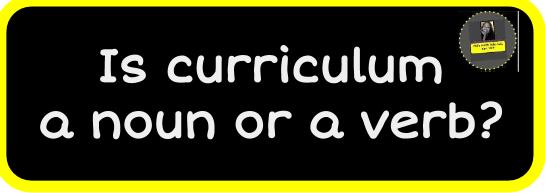Is curriculum a noun or a verb? When I first started my career as a middle school science teacher ten years ago in 2005, I would have undoubtedly answered that curriculum is a noun even though it is something that is “done” each day. To my former self, the definition of curriculum was simply the three binders and extensive teacher’s edition science textbook handed to me at the beginning of the school year. I would have defined curriculum as the unit test at the end of chapter one, the text box on page 52 defining key words; curriculum in my naive mind was static, time-bound, and easily accessible and visible.
I feel that part of the naivety was not from being a new teacher, but instead was because of how I was implicitly taught to define curriculum during my pre-service years as an undergraduate student. I remember learning how to develop a unit and about applying a specific design and theme to each unit that fit in with the curriculum standards (and usually within a set time period), but never do I remember rich discussions breaking down the word curriculum itself.
Currently in 2015, my view of curriculum is evolving and I am unable to define the concept itself; I can only give characteristics such as ever-changing, culturally relevant, timely, and historically accurate. When I hear an educator say to follow the curriculum, a sense of confusion immediately sets in my mind. First of all, how is it even possible to “follow” the curriculum when this curriculum is always changing? Every minute of every day there is an opportunity to learn something new, which would technically mean to me that curriculum is everywhere and in everything, down to the colors, signs, and lighting that are in school hallways. This implicit understand might be one reason why educators at times get so overwhelmed. Everything is important, but it is impossible to teach everything to everyone.
In my mind, if one is going to plan curriculum, it makes more sense to think about what to implicitly omit from a classroom and from instruction. For example, I purposely have removed all desks, including the teacher’s desk, from my room in order to omit the theme of individualism. We instead have tables to implicitly state that everyone in this room is a part of a team; we share things and work together to take care of our space. I have had parents question this philosophy, as they are concerned about other students using their child’s materials and about their student not having personal space. My response back is always that we are a community in this room and that we respect each other’s belongings and that I as the teacher will always provide students with all of the tools they need in order to be successful.
With this in mind, how can we as educators make to begin the reconceptualization of the math curriculum?
In my mind, this reconceptualization begins with a shift in language-
In my mind, this reconceptualization begins with a shift in language-
Hidden in the language of saying that there are things that "good" mathematicians do, is the fact that if you are not doing these things, then you must be "bad". Being good or bad at something implies a fixed mindset. Instead of implicitly telling students what they are - bad or good- indicate to students what they are capable of becoming. Replacing the word good with strong implies that these skills are something that you can improve upon over time- a growth mindset with the realization that curriculum truly is a series of actions. A student might be the opposite of strong right now (weak), but just as in sports and other aspects of life, practice, determination, and perseverance will allow for the possibility of improvement and strength in skills.
Each of the skills listed above are teachable throughout the year and students should be able to sight evidence for how they know they are improving in these areas.
How are you reconceptualizing your math curriculum?









